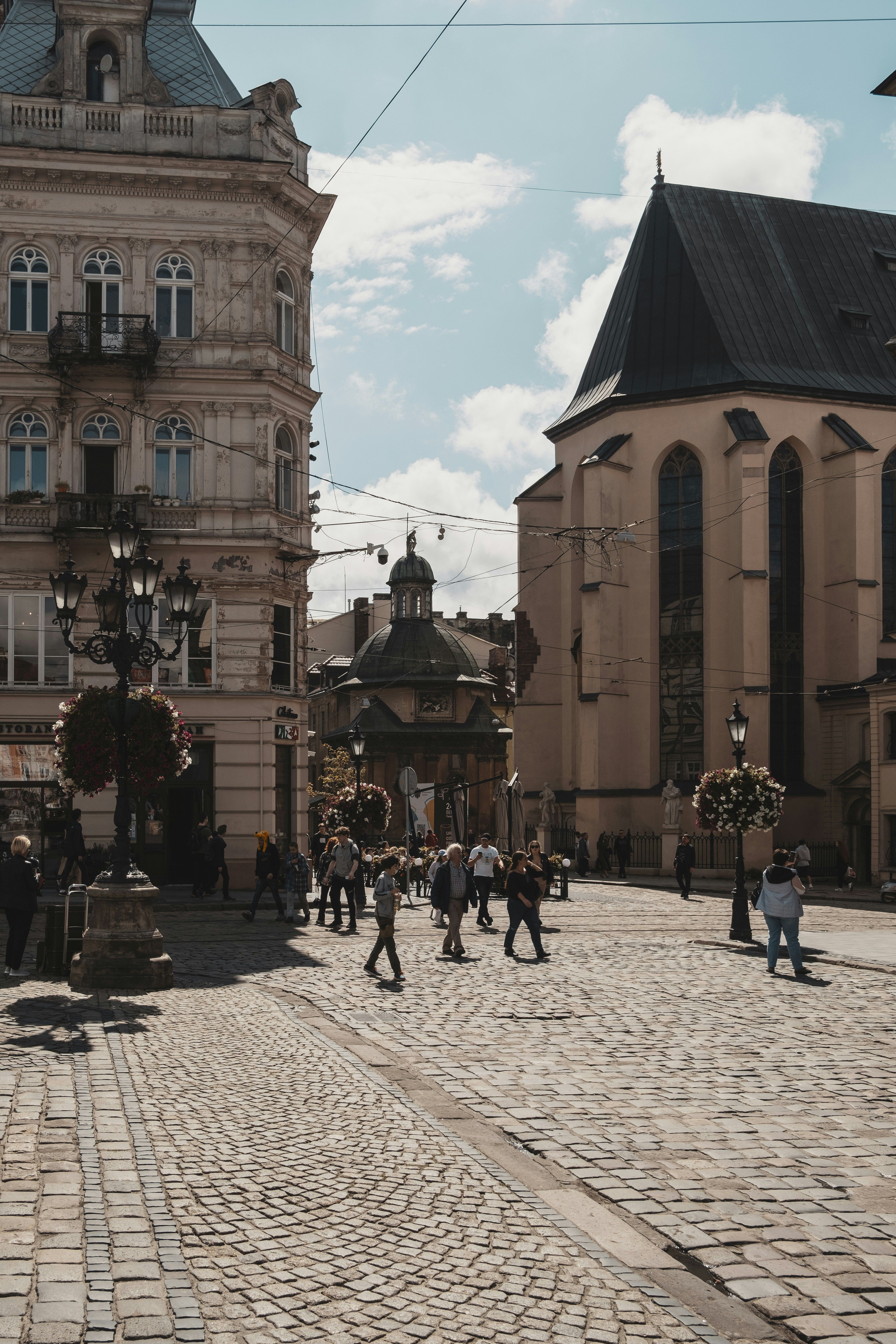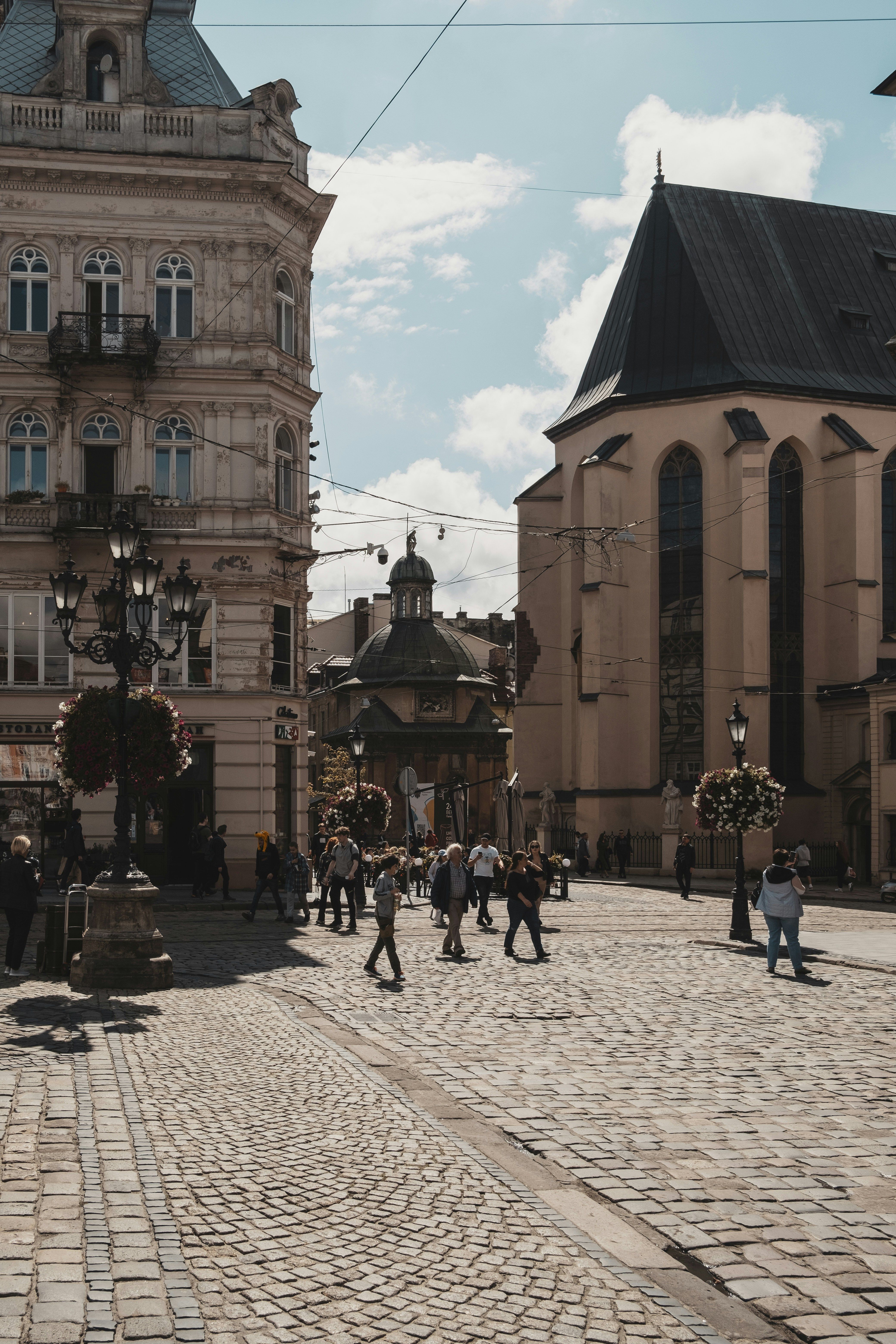Urban heat islands (UHI) – when city areas are significantly warmer than their surroundings – have become an urgent issue amid global warming. In Ukraine, the phenomenon remains under-studied. Lviv has recently completed its first detailed study of the UHI effect in the city. During summer 2024, City Institute experts used satellite imagery and field measurements to map temperatures across Lviv. They identified hotspots and examined how different surfaces affect the local climate, providing a basis for mitigation strategies. The findings were shared with the public at the “Майстерня міста” (City Workshop) urban festival, where several small “pocket parks” were planted as pilot cooling projects.
Impact on Urban Microclimate
The study showed that dense built-up areas of Lviv heat up dramatically in summer. Satellite data revealed surface temperatures on hot days reaching ~44°C in the city, versus about 15°C in green outlying areas. The city center also stays warmer after sunset: at 21:00, the air at Rynok Square was ~25°C while a rural site dropped to ~20°C. This heat accumulation increases discomfort and health risks during heatwaves. It also strains the energy system – air conditioners must run longer. In short, the UHI effect is not only about comfort but also about public health and infrastructure.
Role of Green Spaces in Cooling
Greenery plays a crucial role in cooling the city naturally. Vegetation provides shade and evaporative cooling, which lowers nearby temperatures. Measurements in Lviv show that morning surface temperatures in a dense urban block were 11°C higher than in a large park (Znesinnya) at the same time. By midday, the contrast grows – Rynok Square’s surface reached ~32°C while the tree-shaded High Castle Park stayed around 22°C. Parks, tree-lined streets, and green courtyards thus significantly reduce local temperatures. In tightly built districts, even small “green oases” improve the microclimate. Expanding a network of green spaces – from pocket parks and shaded boulevards to green roofs – is one of the most effective ways to combat urban overheating.
Urban Layout and Materials
Lviv’s urban design also influences the heat island effect. Narrow streets and continuous building blocks in the historic center hinder air flow. Furthermore, the city core lies in a low basin (the Poltva Valley) surrounded by hills, which traps hot air. As a result, central neighborhoods accumulate excess heat. Urban construction materials add to the problem: asphalt, concrete, and dark roofs absorb and retain heat much more than natural surfaces. For example, a black tar roof or a large asphalt lot can be 6–10°C hotter than a nearby light-colored or grassy surface. The study identified several of Lviv’s “hot spots” – areas of extreme heat accumulation. These include the historic core, dense commercial districts (e.g. along Chornovola Avenue), the main railway station area, major industrial zones (like the LAZ factory and Ryasne-2), and extensive paved expanses such as mall parking lots. In these places, compact development and lack of greenery create the highest thermal stress. The city should prioritize redesigning and greening these zones – planting street trees, adding shade canopies, and using lighter, reflective materials.

Solutions and City Workshop Initiatives
The study’s data are already guiding practical steps. Under the City Workshop initiative, “pocket parks” have been established in some of the most densely built neighborhoods. These small green patches have lowered surface temperatures and improved comfort nearby. The scientific findings also support other measures: planting trees along overheated streets, greening building facades (“green walls”), and adopting cool or green roofs instead of dark surfaces. All such actions aim to make Lviv’s urban environment more heat-resilient using evidence-based approaches.

More information and detailed results can be found in the full research report, which includes maps, data, and recommendations: https://www.researchgate.net/publication/392093838_URBAN_HEAT_ISLAND_EFFECT_AND_ITS_INFLUENCE_ON_TRANSFORMATIONS_IN_LVIV
Conclusion
Addressing the urban heat island effect is a key part of building Lviv’s climate resilience. Combining more greenery with climate-conscious urban planning will help reduce heat stress and improve livability. The City Institute invites experts and active residents to join a collective effort to make Lviv more resilient to the challenges of a warming climate. Only together can the community and authorities transform Lviv into a comfortable, heat-resilient city on the path toward climate neutrality by 2050.
